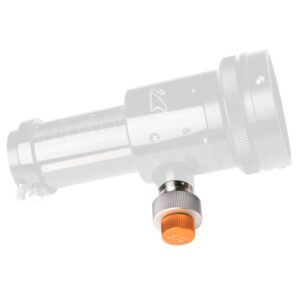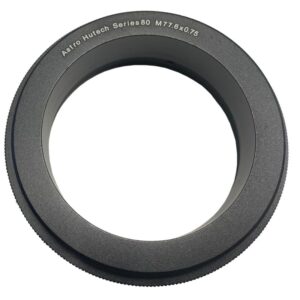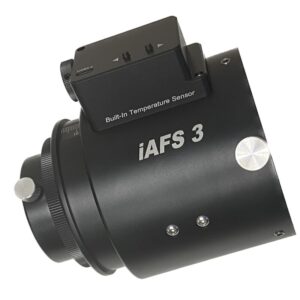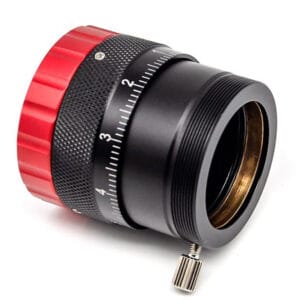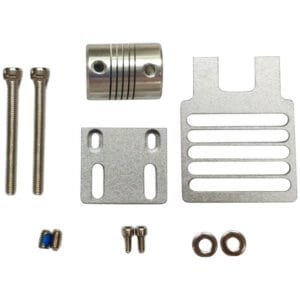Focusers
Razor-sharp focusing at any magnification
A good focuser determines the precision of your observation as well as your astrophotos. With micro- and dual-speed focusers, you'll focus effortlessly, even at high magnifications or long exposures. Choose from Crayford, helical or motorized models - all available directly from stock and delivered within 48 hours.
Showing all 8 resultsSorted by popularity
Showing all 8 resultsSorted by popularity
Focusers: razor-sharp focusing for optimal perception
A reliable focuser is essential for getting every detail in razor-sharp focus. Whether you're a hobby stargazer or an avid astrophotographer, the right focuser ensures smooth, accurate and flicker-free focusing - crucial at high magnifications and long exposures. In this guide, you'll read:
Why a high-quality focuser is indispensable
The most common types and their advantages and disadvantages
Installation and adjustment tips for optimal performance
Maintenance guidelines to prevent wear and backlash
1. Why invest in a good focuser?
Accuracy and back-focus
Small millimeters of difference in the distance between lens plane and eyepiece or camera sensor determine whether stars remain point-shaped over the entire image.Minimizing backlash and backlash
Backlash causes faltering focusing; backlash leads to a delayed response on rollback. Quality focusers reduce these errors to a fraction of a millimeter.Carrying capacity
Heavy accessories such as cameras, filter wheels and reducers stress the focuser. A sturdy rack-and-pinion or professional Crayford construction remains stable without sagging.Comfort and speed
Dual-speed buttons (10:1 reduction or greater) combine fast coarse steps with fine adjustment screws for tricky focus points.
2. Type of focusers and applications
| Focuser type | Advantages | Cons |
|---|---|---|
| Crayford | Friction base, virtually no backlash, lightweight | Limited carrying capacity with heavy sets |
| Rack-and-pinion | High carrying capacity, robust | Can develop slack |
| Dual-speed | Combination fast/fine setting | More complex construction |
| Motor Focuser | Remote control, temperature compensation, automation | More expensive, additional feeding required |
| Microfocuser | Ultra-accurate for astrophotography | Slower coarse steps |
3. Installation and adjustment tips
Check back-focus
Measure the recommended flange distance of your reducers, field flatteners or camera. Build up your focusing chain on a table and measure with calipers.Stabilize with support rings
Attach t-rings and adapter rings smoothly but securely. Use anti-creep rings for extra grip.Minimize backlash
On rack-and-pinion models, adjust the gears slightly tighter, but not too tight. On Crayford models, adjust the pressure plate.Dual-speed adjustment
Ensure that the fine knob provides a reduction ratio of at least 10:1. Test that small rotational movements are immediately translated into minimal shifts.Motor Focuser Setup
- Install the stepper motor with the correct torque ratio.
- Set backlash compensation in software (ASCOM/INDI).
- Calibrate end and start positions to prevent the motor from running into physical stops.
4. Maintenance and longevity
Periodic cleaning
Remove dust and grit with a soft brush or blower. Lightly wipe metal rails with a dry microfiber cloth.Lubrication
For rack-and-pinion rails, you can use a drop of light machine oil once a year. Avoid excess grease that attracts dust.Checking for backlash
Turn the coarse and fine knobs through their full range; feel for hiccups or overshoots. Adjust where possible.Protection
Put dust caps on your focuser when not in use. Store accessories in a dustproof case or bag.
5. Integration into astrophotography and EAA.
Autofocus workflows
Pair your motor focuser with sequencer software for perpetual autofocus during long exposure sequences. Temperature compensation prevents blur with temperature changes.Plate-solving assistance
Use plate solving to precisely focus on star patterns; then fine-tune via focuser controller.Visual versus photographic
For purely visual use, a Crayford is often sufficient; for photography, a heavy dual-speed or motor focuser is essential.
Frequently Asked Questions about Focusers
What is the difference between a Crayford and rack-and-pinion focuser?
Crayfords operate via friction without gears and avoid backlash; rack-and-pinions use gears for higher carrying capacity.Why is dual-speed focusing important?
You combine fast coarse movements with a fine 10:1 or 20:1 reduction knob for precise sharpness without overshoot.How do I measure the correct back-focus for my setup?
Calculate the sum of all parts between eyepiece plane and sensor: focuser, reducer, filter wheel and camera.How do I minimize backlash in a rack-and-pinion focuser?
Adjust the gear tightness manually with the adjustment nuts provided, without making the movement rigid.Are motor focusers necessary for astrophotography?
They are highly recommended: they offer remote control, autofocus functions and temperature compensation for consistent results.How do I install a motor focuser on my focuser?
Mount adapter plate, attach stepper motor, connect USB or hand controller and install driver in your operating system.How often should I lubricate my focuser?
Once a year or after 100+ hours of use, with a drop of light machine oil on the gears or shaft.What causes backlash and how do I fix it?
Backlash is caused by backlash between gears. Reduce this with fine-tuning of the adjusting nuts or choose a model with built-in backlash compensation.Can I update a telescopic focuser to motor control?
Mostly yes: there are upgrade kits for popular Crayford and rack-and-pinion models.How do I prevent the focuser from sagging under heavy load?
Use a model with larger shaft diameter (≥40 mm) or a linear rail focuser for maximum rigidity.Should I adjust the focuser every time the temperature changes?
Small differences in temperature rarely require adjustments; during sharp nighttime temperature drops, a motor focuser can automatically correct.Is 10:1 or 20:1 reduction better for dual-speed?
10:1 is common and provides adequate precision; at very high magnifications, 20:1 can provide more control.How do I store my focuser when I'm not using it?
Place dust caps on both sides and store in a dust-free and moisture-free environment.What is the maximum load on a standard rack-and-pinion?
Many models carry 5-10 kg without noticeable deflection; check the manufacturer's specifications.How do I set backlash compensation in software?
Use the backlash measurement shown in your ASCOM driver to set an opposite motion.How do I recognize worn gears?
Listen for grinding noises and feel hiccups during slow movement of the focuser.Can I disassemble a focuser myself for cleaning?
Only if you are familiar with mechanical parts; do not tighten clamping rings too loosely to avoid disturbing internal alignment.What is the advantage of a linear rail focuser?
No round shaft, so no backlash at all and extremely high rigidity for heavy astrophotography sets.How do I align my focuser perfectly with the optical axis?
Use a collimation shield or laser collimator through the focuser to check alignment.Is a telescopic focuser universal on any telescope?
Not always; pay attention to the mounting size (thread, bayonet) and back-focus requirements of your telescope.

